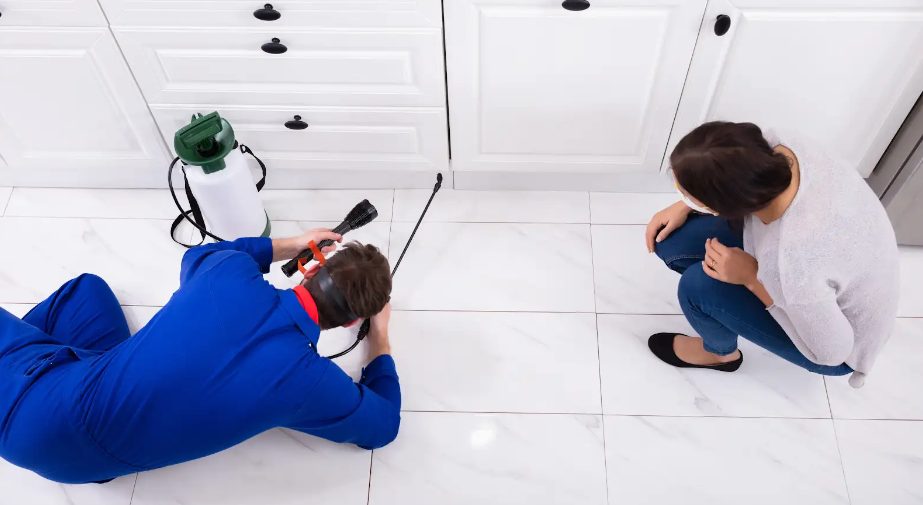10 Most Common Termite Treatment Myths Debunked

Termites, often termed the “silent destroyers,” can cause extensive damage to homes and buildings before they are even detected. Given the seriousness of a termite infestation, it’s no surprise that many myths and misconceptions have developed around termite treatment and prevention. These myths can lead homeowners astray, resulting in ineffective treatments and prolonged infestations. In this article, we’ll debunk some of the most common termite removal myths and provide you with the accurate information you need for successful termite control.
Myth 1: Termites Only Infest Old or Poorly Maintained Homes
One of the most pervasive myths is that termites only target old or neglected homes. While it’s true that older homes may have more entry points and structural weaknesses, termites are opportunistic and can infest any property, regardless of age or condition. Termites are attracted to moisture and cellulose, which are present in all homes. Newer homes, if built with wood and situated in termite-prone areas, are equally susceptible to infestation.
Myth 2: Concrete Slabs Prevent Termite Infestations
Many homeowners believe that having a concrete slab foundation will protect their home from termites. However, subterranean termites are adept at finding ways to enter structures, even those with concrete foundations. They can navigate through cracks as small as 1/32 of an inch in the slab or build mud tubes to reach above-ground wood. Proper treatment and regular inspections are essential, regardless of the type of foundation.
Myth 3: DIY Termite Treatments Are Just as Effective as Professional Treatments
While some DIY termite treatments can help control minor infestations or act as preventative measures, they are often not as effective as professional treatments for eradicating a well-established colony. Termite control requires specialized knowledge of termite behavior and access to professional-grade products. Professionals can conduct thorough inspections, identify the extent of the infestation, and apply treatments that DIY products simply can’t match in terms of potency and effectiveness.
Myth 4: Termites Are Only a Problem in Warm Climates
Although termites thrive in warm, humid climates, they are present in nearly every state in the U.S. and can cause damage wherever they find suitable conditions. Subterranean termites, in particular, are adaptable and can survive in a variety of climates. Homeowners in cooler regions should not assume they are immune to termite problems and should remain vigilant with regular inspections and preventive measures.
Myth 5: Once Termites Are Treated, They Will Never Return
Termite treatment can effectively eliminate an existing infestation, but it doesn’t guarantee that termites will never return. Termite control should be viewed as an ongoing process. Regular inspections and preventive treatments are crucial to ensure that new colonies don’t establish themselves. Maintaining a termite-free home requires vigilance and a proactive approach to monitoring and prevention.
Myth 6: All Termite Treatments Are Harmful to Humans and Pets
Modern termite treatments are designed to be safe when used correctly. Pest control professionals use products that are extensively tested and regulated to ensure they are effective against termites but pose minimal risk to humans and pets. Non-chemical treatment options, such as heat treatments and baiting systems, are also available, which can provide effective termite control without the use of traditional pesticides.
Myth 7: You Can Spot Termites Easily
Termites are notoriously difficult to detect, as they often infest hidden areas and cause damage from the inside out. By the time visible signs, such as mud tubes or damaged wood, are noticed, significant structural damage may have already occurred. Relying on visible signs alone is not enough. Regular professional inspections are essential to detect termite activity early and address it promptly.
Myth 8: Termites Only Eat Wood
While wood is their primary food source, termites can also damage other materials that contain cellulose, such as paper, cardboard, and even some types of fabric. In their quest for food, termites can also damage non-cellulose materials like insulation, plaster, and metal siding as they tunnel through to reach wood. This broad range of potential damage highlights the importance of comprehensive termite control strategies.
Myth 9: Over-the-Counter Sprays Can Eliminate Termite Infestations
Over-the-counter sprays and insecticides can kill termites on contact but are unlikely to reach the entire colony. Termite colonies can be extensive, with nests often located deep underground or within the structure of your home. Effective termite control typically requires targeted treatments that can eliminate the entire colony, not just the visible termites.
Myth 10: Termite Damage Is Covered by Homeowners Insurance
Many homeowners assume that termite damage is covered by their insurance policy, but this is rarely the case. Most standard homeowners insurance policies consider termite damage as a preventable maintenance issue and do not cover it. This makes regular inspections and preventive measures even more critical to avoid costly repairs.
Understanding the realities of termite behavior and treatment is crucial for effective termite control. By debunking these common myths, homeowners can take informed actions to protect their properties. Regular inspections, professional treatments, and ongoing preventive measures are key components of a successful termite control strategy. Don’t let myths lead you into complacency or ineffective solutions. Stay informed, stay vigilant, and ensure your home remains termite-free.


